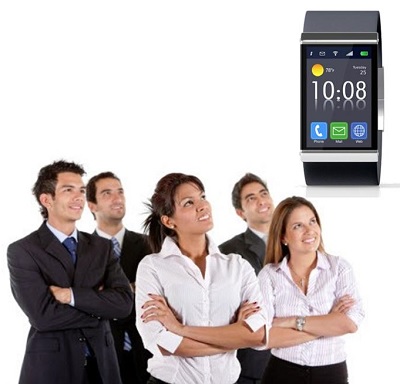Augmented reality is beginning to gain traction in many sectors, particularly entertainment. This technology is not new, having first been alluded to in 1901. In 1968, the first augmented reality headset was invented by Ivan Sutherland. Since then, the technology has been experiencing slow advances until very recently. In the 2000’s, the technology began receiving more attention as a way to, quite literally, change the way people see and experience the world around them. In the past few years, augmented reality has come to play a major role in the tech field, especially when it comes to mobile technology.
In entertainment, AR is beginning to play a big role. The technology is being put to use in a variety of mobile applications, many of which involve gaming. The game industry has taken a strong interest in AR because of its interactive nature. Companies like Sony and Microsoft are reportedly developing AR headsets that can transform a living room into an interactive gaming experience. Some small development studios are using the technology in their games to provide players with an experience they cannot find elsewhere.
 Beyond the novelty aspects of AR, the technology is seeing some practical use as well. In the medical field, augmented reality is being used as a sort of high-tech assistant. Surgeons are using the technology to perform delicate procedures with extreme accuracy. AR is also being used for biological studies, allowing researchers to see and manipulate 3D images of cells. AR is also used in architecture, where computer-generated images of a structure can be superimposed over real life locations.
Beyond the novelty aspects of AR, the technology is seeing some practical use as well. In the medical field, augmented reality is being used as a sort of high-tech assistant. Surgeons are using the technology to perform delicate procedures with extreme accuracy. AR is also being used for biological studies, allowing researchers to see and manipulate 3D images of cells. AR is also used in architecture, where computer-generated images of a structure can be superimposed over real life locations.
Augmented reality certainly has the potential to change the way people see the world, but its capabilities are often limited by existing hardware. Many mobile devices are simply not powerful enough to take full advantage of the features of AR. Larger computers can push the limits of AR, but tend to fall short as the use of AR becomes more complex. In the future, the limitations imposed on AR may be erased, and how the technology injects itself in daily life may be a marvel.
Wearable technology is gaining a lot of momentum, but does it have any real value? There are a wide range of wearable devices that are set to be released in the coming years, some more innovative than others. Some of these devices promise to change the way people see the world, while others are designed simply to make it easier for people to keep track of their personal information. Some believe wearable devices are nothing more than novelty entertainment tools and others argue that these devices are likely to have a major impact on society, quite literally affecting the way people interact with one another in the future. The real question, however, is this: What do wearable devices do that smartphones can’t?
The question is somewhat complicated. Conventional mobile devices like smartphones and tablets are loaded with a wide range of features that are interactive in nature and designed to make people’s life somewhat more simplistic or enjoyable. The majority of these devices can be customized to suit a person’s particular needs through the use of mobile applications. Augmented reality apps can change the way people see the world, and fitness applications can help people keep track of their physical activity. Other apps can be used to manage finances or find deals at local stores or they can be used for navigational purposes. The problem with smartphones and tablets, however, is that they can only be held and not worn.
 Wearable devices can do everything that conventional devices can do, but they do so in a different way. Augmented reality glasses, for example, allow AR applications to be somewhat more intuitive. The benefit of these devices, however, if that they can be operated hands-free, in most cases. Many wearable devices that are being released in the coming months feature voice recognition controls, but the responsiveness of these controls is dubious, especially in crowded areas where many people are talking at once.
Wearable devices can do everything that conventional devices can do, but they do so in a different way. Augmented reality glasses, for example, allow AR applications to be somewhat more intuitive. The benefit of these devices, however, if that they can be operated hands-free, in most cases. Many wearable devices that are being released in the coming months feature voice recognition controls, but the responsiveness of these controls is dubious, especially in crowded areas where many people are talking at once.
Currently, wearable devices exist as a sort of novelty. These devices do not yet do anything more than what can be accomplished with conventional devices. In the future, wearable devices may be more robust, but whether or not they will be able to compete with smartphones and tablets is difficult to say for sure.
 Beyond the novelty aspects of AR, the technology is seeing some practical use as well. In the medical field, augmented reality is being used as a sort of high-tech assistant. Surgeons are using the technology to perform delicate procedures with extreme accuracy. AR is also being used for biological studies, allowing researchers to see and manipulate 3D images of cells. AR is also used in architecture, where computer-generated images of a structure can be superimposed over real life locations.
Beyond the novelty aspects of AR, the technology is seeing some practical use as well. In the medical field, augmented reality is being used as a sort of high-tech assistant. Surgeons are using the technology to perform delicate procedures with extreme accuracy. AR is also being used for biological studies, allowing researchers to see and manipulate 3D images of cells. AR is also used in architecture, where computer-generated images of a structure can be superimposed over real life locations.
 Wearable devices can do everything that conventional devices can do, but they do so in a different way.
Wearable devices can do everything that conventional devices can do, but they do so in a different way. 